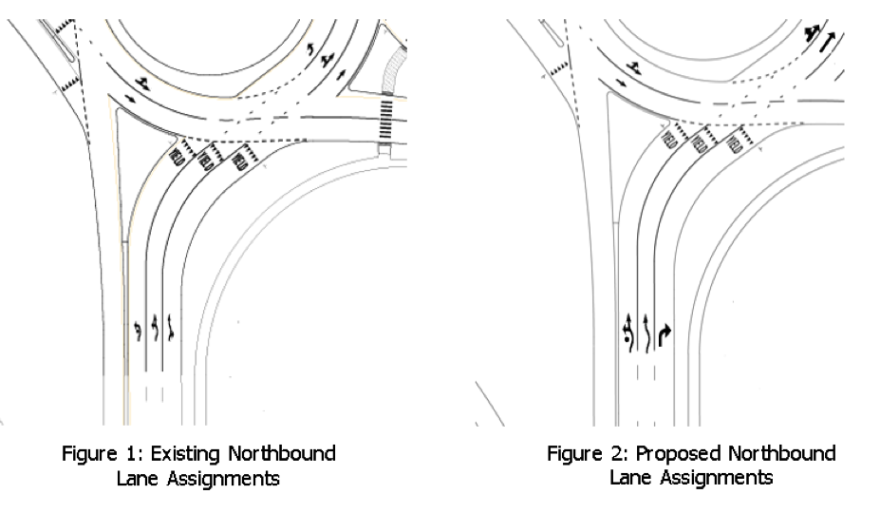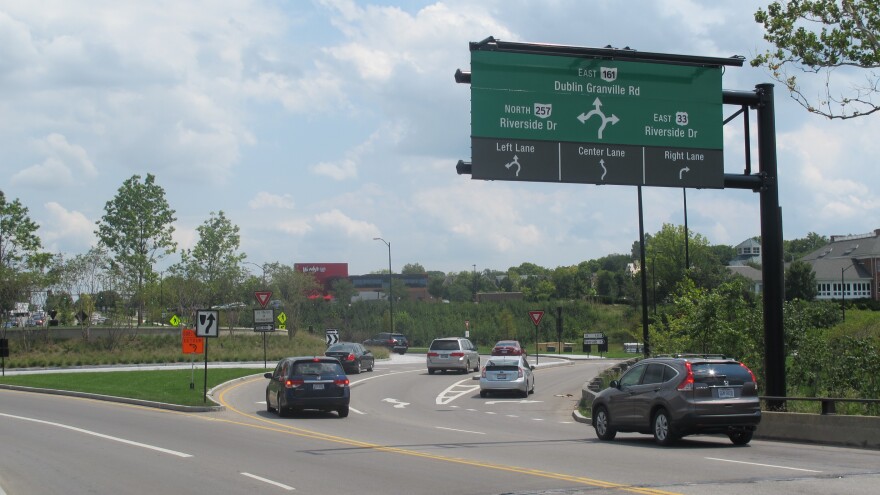The city of Dublin has become famous – or infamous – for its roundabouts. Its signature traffic circle, the big one at Route 161 and Riverside Drive, has had some problems: since it opened last summer, the number of accidents at the busy intersection has ballooned.
Now, the city plans changes to try to bring down the accident rate.
"I go through the roundabout a few times every day," says Parker Salata. "And it’s awful."
About 40,000 vehicles a day go through the Route 161/Riverside roundabout. Salata says roundabouts are generally good, but not this one.
Meanwhile, 16-year-old new driver Pooja Vallam tries to avoid it entirely.
"There’s just traffic coming from all sorts of like, all sides, and they all meet up at one place," Vallam says. "So it can be very difficult."
This intersection was one of Dublin’s top three crash location intersections for a number of years.
Public works director Megan O’Callaghan says a study conducted over several years determined a roundabout was a good solution.
"Roundabouts are proven to improve operational efficiency as well as safety at intersections," O'Callaghan says.

The roundabout was a signature piece of Dublin’s Bridge Street redevelopment, which included the realignment of Riverside Drive. At a cost of $23 million, the roundabout opened a year ago.
O’Callaghan says people have had a tough time getting used to it.
"We would oftentimes expect to see an adjustment period for drivers going through that area," she says. "We did see an increase in crashes initially. We closely monitored those crashes, we worked closely with police to analyze the crashes."
The city put up new signs, produced an instruction video, and the crash rate decreased, but not as much as the city hoped.
Deb and Dave Shuttleworth are among the crowd who actually like the roundabout.
"We were just discussing it because my husband drives it every day and is really comfortable," Deb says. "I don’t, but it was easy enough."
"If you take your turn and you wait, it works, so I’m all in favor," Dave adds.
The roundabout is marked by near-constant honking, and at least a half-dozen close calls over a half-hour period.
Data tells the same story, with some eye-popping numbers. In 2014, before the roundabout, there were 20 accidents at the intersection. In the past year, that jumped to 156 accidents..
Drivers like Salata says the roundabout is not doing what it's supposed to.
"I've seen and heard multiple wrecks through it," he says. "I’ve almost been in a few. People not yielding, people changing lanes, people stopping in the middle of the roundabout, and it’s just been disastrous."
Nearly all of the accidents at the roundabout are minor fender benders, with very few injuries. But the city admits there's a problem.

Engineers and police analyzed the roundabout design, and will change one busy entry point.
"The northbound lane configuration will become, the left lane will be left turn or straight through," O'Callaghan says. "The center lane will be straight only. And there will be a dedicated right-turn only lane."
Officials hope the changes will greatly reduce the number of crashes. But it will cost $260,000.
The rest could be up to drivers. Jeannie Willis, Dublin’s engineering manager of transportation, says drivers need to follow the rules.
"We really want to emphasize to our drivers driving in any roundabout is that they need to yield to both lanes," Willis says. "Both the inside and lane closest to the central island in the roundabout."
There’s no word on when the work will begin, with October being the earliest timetable for changes to be implemented.




